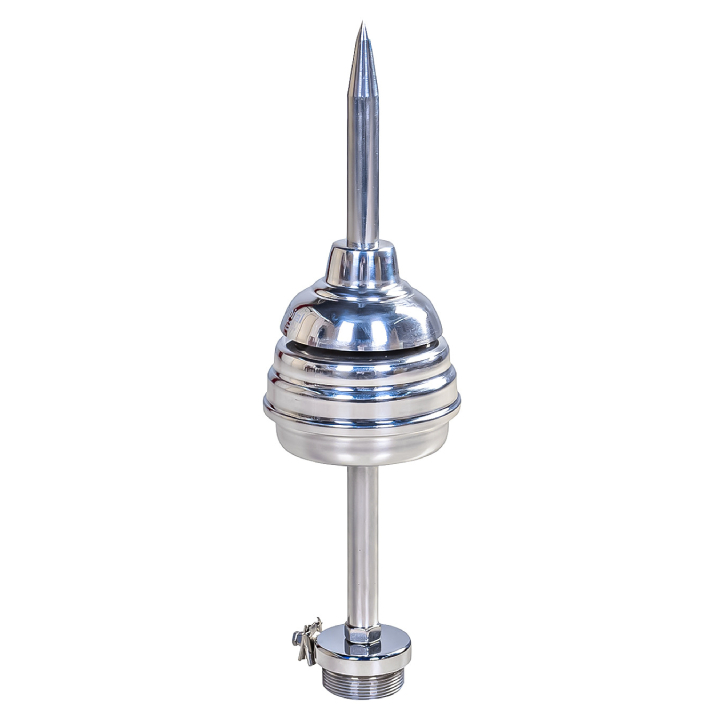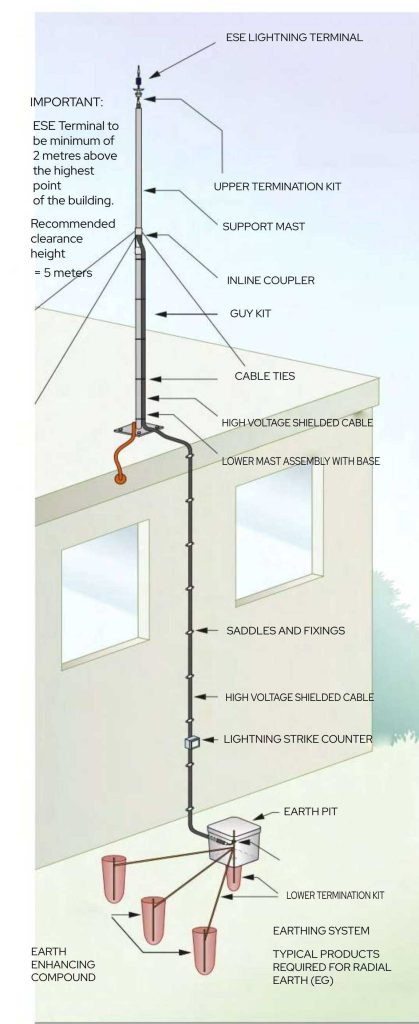ESE Lightning Arrester
An Early Streamer Emission (ESE) lightning arrester, also known as an Early Streamer Emission air terminal or lightning rod, is designed to protect structures and equipment from lightning strikes. Its working principle is based on the ability to trigger a streamer discharge that provides a preferred path for the lightning strike to follow, thereby diverting the electrical energy safely to the ground.

Protection Radius as Per NFC 17-102 Standard
| H (m) | Protection Level | |||
| I | II | III | IV | |
| 2 | 31 | 35 | 39 | 43 |
| 3 | 47 | 52 | 58 | 64 |
| 5 | 79 | 86 | 97 | 107 |
| 10 | 79 | 88 | 99 | 109 |
| 20 | 80 | 89 | 102 | 113 |
- Protection Radius – 107mtrs as per NFC 17-102
- Also available in Protection Radius of 125mtrs
ESE Lightning Protection
ESE Terminals, also known as Early Streamer Emission lightning rods, are advanced lightning protection devices designed to safeguard structures and equipment from lightning strikes. These terminals work by triggering an early streamer discharge, effectively creating a preferred path for lightning to follow. By doing so, they divert the electrical energy away from the protected area, reducing the risk of damage and fire. ESE terminals are a reliable choice for lightning protection in areas prone to thunderstorms.
Down-Conducting
ESE Lightning arrester Down Conductor should be minimum 50 mm2.A down conductor is an essential component of a lightning protection system. It serves as the pathway for safely conducting the lightning current from the lightning rod or ESE terminal to the grounding system. These conductors are typically made of highly conductive materials such as copper or aluminum and are installed in a manner that minimizes the risk of side flashing or damage to the structure. Properly designed and installed down conductors help ensure that the energy from a lightning strike is safely dissipated into the ground, preventing potential harm to people and property.
Earthing
Grounding or earthing is a critical aspect of lightning protection systems. It involves establishing a low-resistance path for lightning current to safely dissipate into the earth. Proper earthing ensures that the energy from a lightning strike does not pose a threat to the structure or its occupants. This is achieved by installing a network of conductive materials, such as copper or copper-bonded rods, which are buried in the ground and interconnected. The effectiveness of earthing in a lightning protection system is a key factor in preventing electrical damage, fires, and other hazards associated with lightning strikes.
ESE Lightning Arrester Installation

